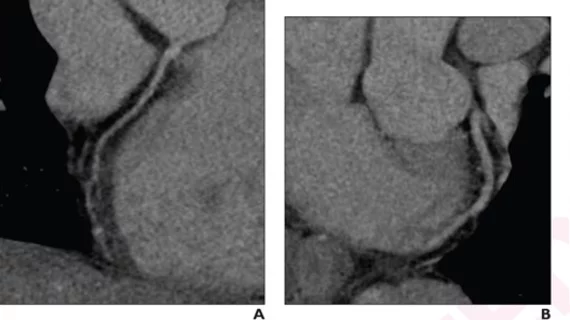Dual source CT scanners shown to expedite treatment in emergency settings
Dual source CT scanners can eliminate the need for beta blockers to control heart rates during coronary CTA exams [1].
In turn, this reduces the amount of time it takes to complete such scans, which is of particular interest for chest pain patients in emergency settings, note the authors of a new research paper published March 1 in the American Journal of Roentgenology.
For the study, experts compared the cases of 509 patients who presented to the emergency department for acute onset chest pain. Patients underwent coronary CTA exams using either a 64-detector single source CT (SSCT) scanner with heart rate control (oral beta-blocker administration) or using a third generation DSCT (after its installation in April of 2021) without HR control. Experts compared the cases to determine how the differing scanners affected length of stay (LOS) in the emergency department, CT completion time and diagnostic quality of the exams.
The team did not observe a difference in the patients’ LOS, but they did note significantly reduced CT completion times, down from 117 minutes on SSCT scanners to 95 minutes using DSCT. This was attributed to the absence of interventions to control the patients’ heart rates.
Notably, the reduction in completion time did not impact diagnostic quality of the exams. The DSCT group showed higher frequency of exams with good-to-excellent quality (87.8% vs 60.0%) and lower frequency of scans with nondiagnostic quality.
Corresponding author of the paper Young Joo Suh, MD, PhD, from Korea’s Research Institute of Radiological Science at the Center for Clinical Imaging Data in Seoul, and colleagues suggest that shorter completion times achieved using DSCT scanners could be especially beneficial in expediting treatment for patients in urgent need.
“The findings indicate the potential role of a DSCT scanner with high temporal resolution to help expedite clinical processes in the emergency department setting,” the group wrote, adding that although there are a number of factors that affect LOS and completion times, DSCT still presents a good option in emergency settings.
The study abstract is available here.

